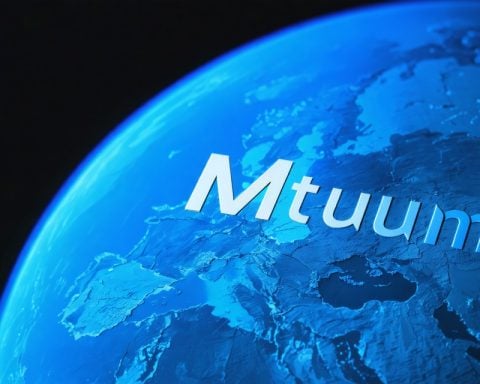- Japan launched the Michibiki 6 satellite using the H3 rocket, enhancing its global positioning system.
- This satellite is part of the quasi-zenith satellite system (QZSS), which aims for independence from U.S. GPS.
- Japan plans to increase its satellite count to seven by March 2026 and eventually expand to an 11-satellite network by the late 2030s.
- The initiative will improve positioning accuracy for various technologies, including smartphones and drones.
- The successful launch of the H3 rocket marks a significant milestone in Japan’s space exploration efforts.
Japan is charting a thrilling course into the future of navigation! On a recent Sunday, the nation successfully launched the Michibiki 6 satellite aboard its cutting-edge H3 rocket, igniting plans to enhance its own global positioning system. This satellite marks a pivotal step in Japan’s quest for independence from foreign navigation services, particularly the U.S. GPS.
Launched from the Tanegashima Space Centre, Michibiki 6 is the fifth member of Japan’s quasi-zenith satellite system (QZSS), which has been operational since 2018 with four satellites. But Japan isn’t stopping here. By March 2026, the country aims to unveil two additional satellites, bringing the total to seven and paving the way for even greater accuracy in positioning. The ultimate vision? An 11-satellite network by the late 2030s, setting Japan apart as a leader in navigation technology.
This ambitious project not only bolsters Japan’s positioning data capabilities but also enhances services for smartphones, car navigation, and even drones, all while ensuring a competitive edge in the global space market. After overcoming earlier launch failures, the success of the H3 rocket signifies a bright horizon for Japan’s robust space endeavors.
> Key Takeaway: Japan is transforming its navigational landscape, reducing reliance on foreign systems, and positioning itself as a formidable player in the satellite launch industry!
Japan’s Space Odyssey: Revolutionizing Navigation with Michibiki 6!
Japan is making significant strides in the field of navigation technology with its latest satellite launch, Michibiki 6. This initiative represents a critical move towards enhancing Japan’s autonomy in global positioning systems, setting the stage for a more robust domestic navigation system.
New Insights and Relevant Information
– Technological Advancements: The Michibiki 6 satellite is equipped with advanced technology that enhances accuracy in urban environments. QZSS satellites work in synergy with GPS, improving reliability for users on the ground where satellite signals may be obstructed.
– Economic Impact: The development and launch of QZSS are expected to create jobs in the aerospace industry and boost related sectors, including automotive manufacturing and logistics.
– International Cooperation: Japan plans to collaborate with other countries, potentially integrating QZSS with global navigation systems to enhance worldwide interoperability, which may lead to shared technological advancements.
– Enhanced Services: The QZSS will offer services beyond standard GPS, including precise positioning for autonomous vehicles, improved agricultural management via drones, and enhanced navigation for marine vessels, which are essential in Japan’s archipelagic geography.
Key Questions and Answers
1. What are the primary benefits of Japan’s quasi-zenith satellite system (QZSS)?
– The QZSS provides enhanced positioning accuracy, particularly in urban canyons where traditional GPS signals struggle. This leads to improved navigation for smartphones, autonomous vehicles, and drone operations.
2. How does Michibiki 6 compare to the existing GPS system?
– While GPS works globally, Michibiki 6 and the QZSS focus on enhancing positioning services in Japan and its surrounding regions, offering better performance under conditions where GPS signals may be weak or unreliable.
3. What is the long-term vision for Japan’s navigation satellite program?
– Japan aims to establish an extensive navigation satellite network with 11 satellites by the late 2030s, significantly improving the accuracy and reliability of its navigation services while reducing dependence on foreign systems.
Additional Considerations
– Limitations: While the QZSS enhances navigation capabilities, it is essential to be aware of potential limitations, such as signal interference and the need for ground infrastructure to support these technologies.
– Market Trends: The global demand for precise navigation and the increasing automation across industries signal a growing market opportunity for Japan’s QZSS.
– Future Innovations: With each new satellite, Japan is likely to introduce innovative applications and services, further solidifying its leadership in the navigation sector.
For more comprehensive insights into Japan’s space innovations, visit JAXA.









